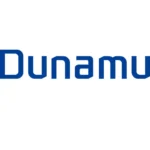United Microelectronics Corp. has formally requested its upstream suppliers slash prices by at least 15% starting in 2026, according to people familiar with the matter, as Taiwan’s second-largest chipmaker braces for brutal negotiations with customers over mature-node wafer pricing.
The demand covers chemicals, specialty gases, substrate materials and maintenance services across UMC’s supply chain. Some materials vendors are exploring staggered concessions in exchange for two-to-three-year contracts with minimum purchase guarantees, indicating how pressure is cascading through the industry.
UMC’s preemptive strike reflects mounting headwinds. The company’s gross margin collapsed to 27.72% in the first half of 2025 from 45.12% in 2022, according to company filings. A new Singapore facility coming online in 2026 will drive depreciation costs higher just as Chinese foundries including SMIC and Hua Hong expand 28-nanometer to 90-nanometer capacity aggressively.
IC design customers remain pessimistic about 2026, preferring pricing flexibility over long-term commitments. That leaves foundries with weakened bargaining power and limited order visibility. Competitors from China and Southeast Asia continue launching new mature-process capacity, drawing away mid-tier chip orders with lower quotes.
Both UMC and smaller rival Vanguard International Semiconductor face the same challenge: defending pricing without eroding margins, while Chinese rivals accept thinner profits backed by government support. The 2026 pricing battle will test whether Taiwanese foundries can leverage specialized processes, superior yields and design support services to justify premium pricing—or whether cost pressure forces broader capitulation.


